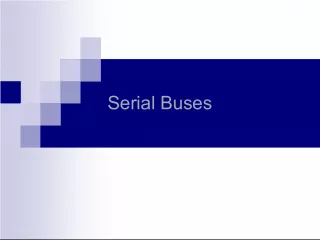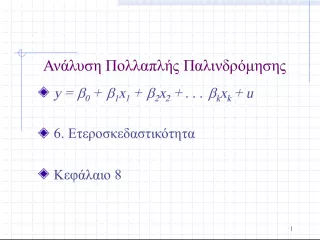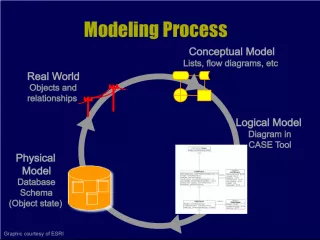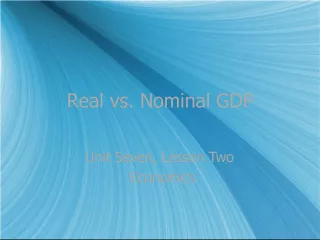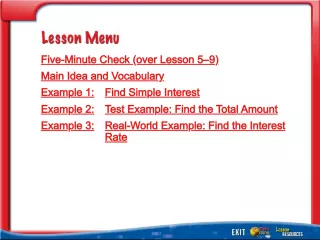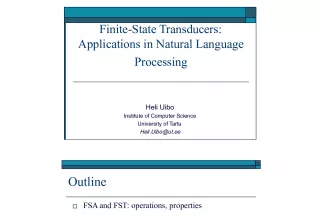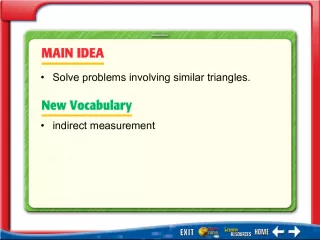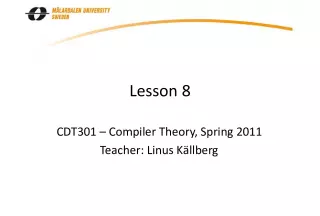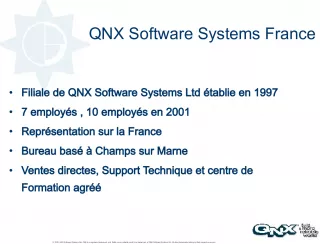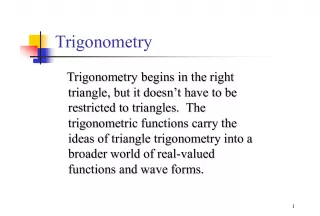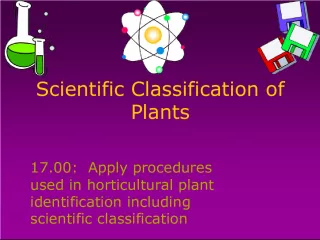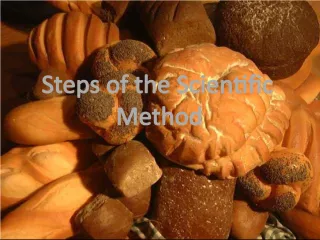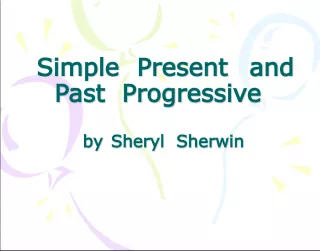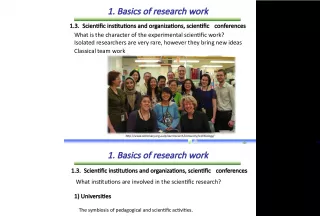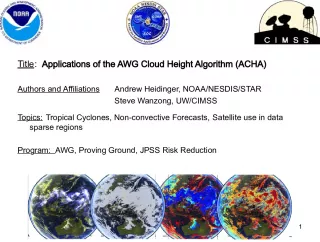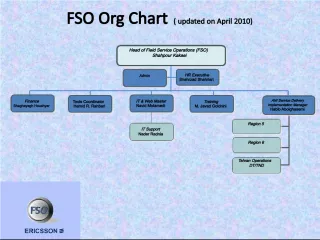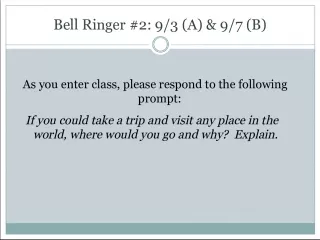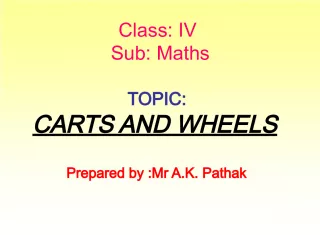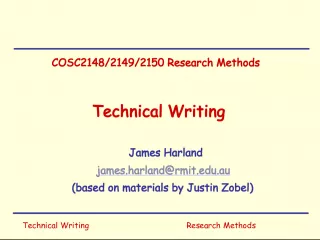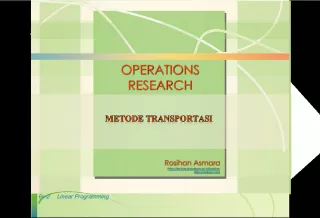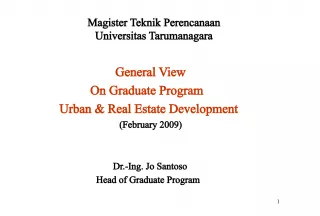Scientific Notation Operations Lesson Examples and Real World Applications
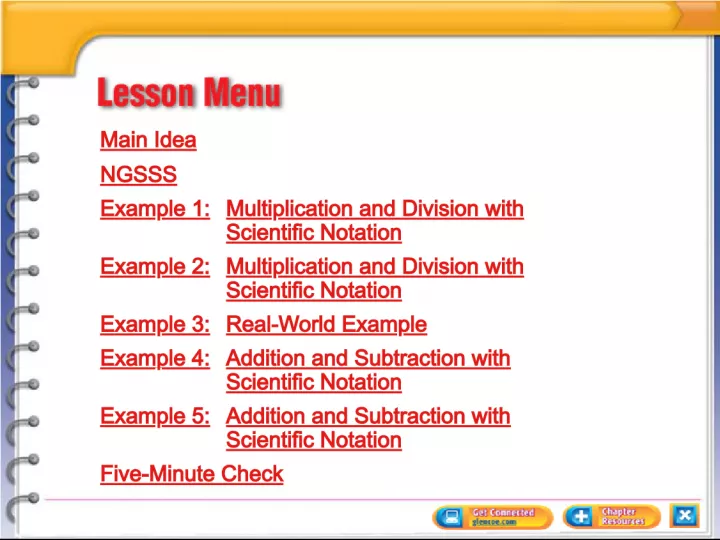

This lesson covers multiplication, division, addition, and subtraction with scientific notation, and includes real world examples. Students will learn to compute with numbers written in scientific notation and use exponents to solve problems. The lesson aligns with NGSSS MA 8 A 6.
- Uploaded on | 4 Views
-
 eliannas
eliannas
About Scientific Notation Operations Lesson Examples and Real World Applications
PowerPoint presentation about 'Scientific Notation Operations Lesson Examples and Real World Applications'. This presentation describes the topic on This lesson covers multiplication, division, addition, and subtraction with scientific notation, and includes real world examples. Students will learn to compute with numbers written in scientific notation and use exponents to solve problems. The lesson aligns with NGSSS MA 8 A 6.. The key topics included in this slideshow are scientific notation, multiplication, division, addition, subtraction, NGSSS MA 8 A 6, exponents, real world applications, compute,. Download this presentation absolutely free.
Presentation Transcript
2. Lesson Menu Main Idea NGSSS Example 1: Multiplication and Division with Scientific Notation Example 2: Multiplication and Division with Scientific Notation Example 3: Real-World Example Example 4: Addition and Subtraction with Scientific Notation Example 5: Addition and Subtraction with Scientific Notation Five-Minute Check
3. Main Idea/Vocabulary Compute with numbers written in scientific notation.
4. NGSSS MA.8.A.6.1 Use exponents and scientific notation to write large and small numbers and vice versa and to solve problems. MA.8.A.6.4 Perform operations on real numbers (including integer exponents , radicals, percents, scientific notation , absolute value, rational numbers, and irrational numbers ) using multistep and real world problems.
5. Example 1 Multiplication and Division with Scientific Notation Evaluate (1.1 10 3 )(2.5 10 9 ). Express the result in scientific notation. (1.1 10 3 )(2.5 10 9 ) = (1.1 2.5 )(10 3 10 9 ) Commutative and Associative Properties = (2.75)(10 3 10 9 ) Multiply 1.1 by 2.5. = 2.75 10 3 + 9 Product of Powers = 2.75 10 6 Add the exponents. Answer: 2.75 10 6
6. Example 1 CYP A. 6.08 10 4 B. 5.1 10 4 C. 6.08 10 4 D. 6.08 10 32 Evaluate (3.2 10 4 )(1.9 10 8 ). Express the result in scientific notation.
7. Example 2 Multiplication and Division with Scientific Notation Evaluate . Express the result in scientific notation. Associative Property Divide 7.75 by 2.5. = 3.1 10 6 (2) Quotient of Powers = 3.1 10 8 Subtract the exponents. Answer: 3.1 10 8
8. Example 2 CYP A. 3.5 10 10 B. 3.5 10 4 C. 3.5 10 4 D. 3.5 10 10 Evaluate . Express the result in scientific notation.
9. Example 3 PLANETS The largest planet in our solar system is Jupiter with a diameter of about 1.43 10 5 kilometers. The smallest planet in our solar system is Mercury with a diameter of about 4.9 10 3 kilometers. About how many times greater is the diameter of Jupiter than the diameter of Mercury?
10. Example 3 Answer: The diameter of Jupiter is about 2.9 10 1 or 29 times greater than the diameter of Mercury. 0.29 10 2 Simplify. 2.9 10 1 Write 0.29 10 2 in scientific notation. Associative Property
11. Example 3 CYP A. 1.47 10 1 times greater B. 1.47 10 5 times greater C. 6.1 10 4 times greater D. 6.1 10 5 times greater ASTRONOMY The mass of Jupiter is about 1.90 10 27 kilometers. The mass of Pluto is about 1.29 10 22 kilometers. About how many times greater is the mass of Jupiter than the mass of Pluto?
12. Example 4 Evaluate (2.85 10 7 ) + (1.61 10 9 ). Express the result in scientific notation. Addition and Subtraction with Scientific Notation (2.85 10 7 ) + (1.61 10 9 ) = (2.85 10 7 ) + (161 10 7 ) Write 1.61 10 9 as 161 10 7 . = (2.85 + 161) 10 7 Distributive Property = 163.85 10 7 Add 0.0285 and 1.61. = 1.6385 10 9 Write 163.85 10 7 in scientific notation. Answer: 1.6385 10 9
13. Example 4 CYP A. 8.9 10 11 B. 5.498 10 5 C. 54.98 10 5 D. 5.498 10 6 Evaluate (3.78 10 5 ) + (5.12 10 6 ). Express the result in scientific notation.
14. Example 5 Addition and Subtraction with Scientific Notation Evaluate (8.23 10 6 ) (6.91 10 5 ). Express the result in scientific notation. (8.23 10 6 ) (6.91 10 5 ) = (82.3 10 5 ) (6.91 10 5 ) Write 8.23 10 6 as 82.3 10 5 . = (82.3 6.91) 10 5 Distributive Property = 75.39 10 5 Subtract 6.91 from 82.3. = 7.539 10 6 Write 75.39 10 5 in scientific notation. Answer: 7.539 10 6
15. Example 5 CYP A. 6.32 10 2 B. 7.5278 10 4 C. 7.5278 10 5 D. 75.278 10 4 Evaluate (7.54 10 5 ) (1.22 10 3 ). Express the result in scientific notation.
16. A. 8.96 10 8 B. 8.96 10 12 C. 6.0 10 12 D. 896 10 8 Evaluate (3.2 10 6 )(2.8 10 2 ). Express the result in scientific notation. Five Minute Check 1
17. A. 2.75 10 2 B. 7.04 10 2 C. 7.04 10 12 D. 2.75 10 12 Five Minute Check 2 Evaluate . Express the result in scientific notation.
18. A. 5.04 10 10 B. 5.04 10 24 C. 3.0798 10 6 D. 3.0798 10 4 Evaluate (1.98 10 4 ) + (3.06 10 6 ). Express the result in scientific notation. Five Minute Check 3
19. A. 4.29 10 12 B. 4.29 10 3 C. 2.9172 10 12 D. 2.98272 10 12 Evaluate (2.99 10 12 ) (7.28 10 9 ). Express the result in scientific notation. Five Minute Check 4
20. A. 2.235 10 4 pounds B. 2.235 10 5 pounds C. 5.28 10 4 pounds D. 5.28 10 5 pounds The empty weight of one airplane is 8.35 10 4 pounds, and the empty weight of a second airplane is 3.07 10 5 pounds. What is the difference in the empty weights of these two airplanes? Five Minute Check 5
